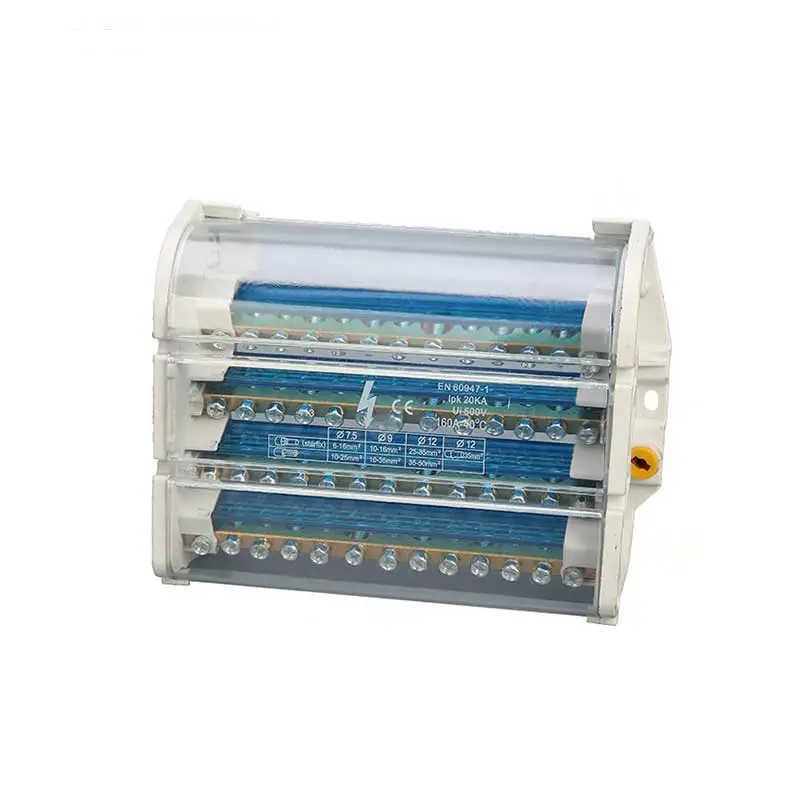Understanding Power Distribution Blocks: Essential Components for Electrical Systems
2024-10-16
In today's increasingly electrified world, the demand for safe, reliable, and efficient power distribution is more crucial than ever. Whether in residential, commercial, or industrial applications, ensuring that electrical systems function optimally is paramount. One key component that plays a vital role in this process is the power distribution block. In this blog, we will explore what power distribution blocks are, how they function, their benefits, and their various applications.
What Is a Power Distribution Block?
A power distribution block (PDB) is an electrical device designed to distribute electrical power from a single source to multiple circuits or loads. Typically made from durable materials like thermoplastic or metal, PDBs are equipped with multiple terminals that allow for secure connections to various wiring configurations. These blocks are widely used in various applications, including automotive, marine, telecommunications, and industrial settings.
Types of Power Distribution Blocks
Power distribution blocks come in various designs and configurations, but they generally fall into two main categories:
1. Single-Level Distribution Blocks: These blocks feature a single row of terminals, allowing for straightforward power distribution to multiple circuits. They are often used in applications where space is limited.
2. Multi-Level Distribution Blocks: These blocks contain multiple rows of terminals, offering more connectivity options and enabling the distribution of power to numerous circuits. Multi-level blocks are ideal for complex electrical systems where multiple power sources and loads need to be managed.
How Do Power Distribution Blocks Work?
Power distribution blocks work by connecting a single power source to multiple electrical loads through a series of terminals. The operation can be summarized in a few key steps:
1. Power Input: The main power source, such as a battery or power supply, is connected to the input terminal of the distribution block.
2. Power Distribution: From the distribution block, the electrical power is routed through multiple output terminals, which connect to various circuits, devices, or systems.
3. Secure Connections: Each output terminal securely connects to its respective load using appropriate wiring methods, ensuring safe and reliable power delivery.
4. Circuit Protection: Some power distribution blocks also integrate circuit protection features, such as fuses or circuit breakers, to prevent overloading and protect connected devices.
Benefits of Using Power Distribution Blocks
1. Safety and Reliability
Power distribution blocks enhance safety by providing secure connections and preventing loose wiring, which can lead to short circuits or electrical fires. They help maintain a reliable electrical system by ensuring that power is evenly distributed to all connected loads.
2. Simplified Wiring
Using a power distribution block simplifies wiring configurations, especially in complex electrical systems. Instead of having multiple connections to a single power source, all connections can be routed through the PDB, reducing clutter and making troubleshooting easier.
3. Space Efficiency
PDBs are designed to maximize space efficiency in electrical installations. By consolidating multiple connections into a single block, they help reduce the amount of wiring needed, making installations neater and more organized.
4. Scalability
Power distribution blocks offer scalability, allowing for easy addition or modification of circuits as the needs of the electrical system change. New loads can be added without the need for extensive rewiring, making them ideal for growing applications.
5. Cost-Effective Solution
By simplifying the wiring process and enhancing safety, power distribution blocks can ultimately lead to cost savings in terms of installation time, materials, and maintenance.
Applications of Power Distribution Blocks
Power distribution blocks are used in various applications across multiple industries, including:
1. Automotive and Marine
In automotive and marine applications, PDBs are used to distribute power from the battery to various components, such as lights, radios, and engines. Their compact design and ability to handle high current make them ideal for these environments.
2. Telecommunications
Telecommunications equipment often requires reliable power distribution to support servers, routers, and switches. PDBs provide the necessary connections for these devices, ensuring uninterrupted power supply.
3. Industrial Settings
In industrial settings, power distribution blocks are used to manage power distribution to heavy machinery and equipment. They are essential for ensuring safe and efficient operations in factories and manufacturing plants.
4. Renewable Energy Systems
Power distribution blocks are increasingly used in solar and wind energy systems to connect various components, such as inverters and batteries, ensuring optimal power management and distribution.
Conclusion
Power distribution blocks are essential components in modern electrical systems, providing safe, reliable, and efficient power distribution. With their ability to simplify wiring, enhance safety, and adapt to changing needs, they have become indispensable in various industries, from automotive to renewable energy.
Understanding the importance of power distribution blocks can help individuals and businesses make informed decisions about their electrical systems, leading to improved performance and safety. Whether you are designing a new electrical installation or upgrading an existing system, considering the integration of power distribution blocks can be a wise choice.



